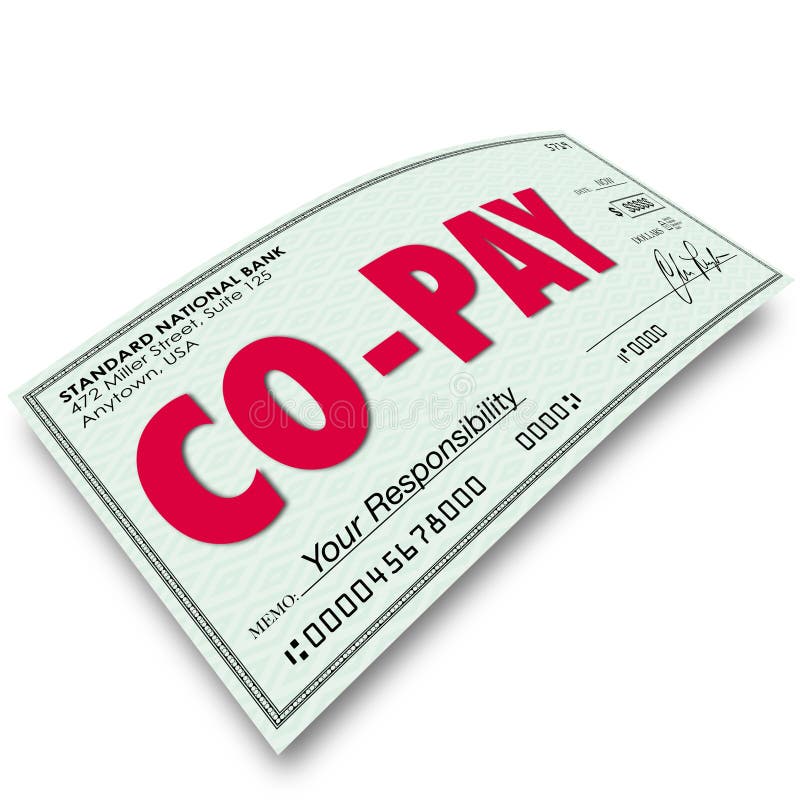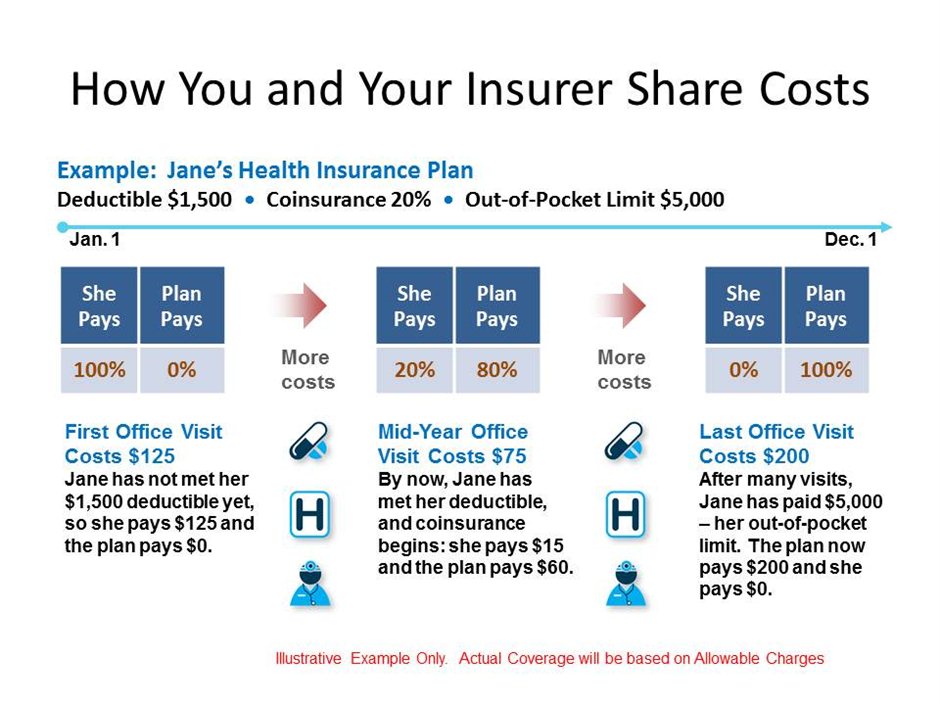Copay Deductible
Xcode 10 download mac. A copay after deductible is a flat fee you pay for medical service as part of a cost sharing relationship & health insurance must pay for your medical expenses.4 min read
1. Copay After Deductible: Everything You Need to KnowCoinsurance is your share of the costs of a health care service. It's usually figured as a percentage of the amount we allow to be charged for services. You start paying coinsurance after you've paid your plan's deductible. How it works: You’ve paid $1,500 in health care expenses and met your deductible. When you go to the doctor, instead of paying all costs, you and your plan share the cost. The copay can vary in price based on the type of healthcare service or facility. For example, the copay cost for a doctor's visit is likely to be less than a trip to the emergency room. Note: In most cases, copay expenses do not go toward your annual deductible, but may be. Pertaining to health insurance, what does 'Copay with deductible' mean, in contrast to 'Copay after deductible'? I get 'Copay after deductible' - you must pay for the service fully out of pocket until your deductible is met, after which you must only pay the copay amount and the insurance pays for the rest. A copay is like paying for repairs when something goes wrong. When your car gets serviced, you pay a set fee to the mechanic, just as you may pay a set fee, like $20, when you go to the doctor because you're sick. Every plan is different, so premiums, deductibles, coinsurance, and copays can vary in cost. Health care question answered.
2. Deductible: What Is It?
3. Are Coinsurance and Copay the Same Thing?
4. What Is the Difference Between Aggregate and Embedded Deductibles?
Copay After Deductible: Everything You Need to Know
A copay after deductible is a flat fee you pay for medical service as part of a cost-sharing relationship in which you and your health insurance provider must pay for your medical expenses. Deductibles, coinsurance, and copays are all examples of cost sharing. If you understand how each of them works, it will help you determine how much and when you must pay for care.

Deductible: What Is It?
The amount you pay for medical services before your health insurance starts paying is known as a deductible. For example, if your insurance deductible is $1,500, you will be responsible for paying all of the pharmacy and medical bills until the amount you pay has reached $1,500. At that point, you begin sharing some future costs with the insurance company through copays and coinsurance.
Typically, a health insurance plan with a high deductible will require you to pay fairly inexpensive payments monthly. Although, initially, you will have to pay a significant amount up front if you were to need care. You may consider looking for plans that will pay for some services before you must pay your deductible. If you are mostly healthy, then it may be a good idea to increase your deductible as an easy way to lower your monthly payments or premiums. However, if you do this and then get sick, your medical bills in a year will be high.
Hospitalizations, blood tests, or surgical procedures may be services you pay for annually as part of your health insurance deductible. These services do not include routine care. Usually, preventative checkup services will just require that you make a co-payment. After the deductible has been met, your insurance will cover the expenses. Update mac terminal.


In a majority of circumstances, neither premiums nor copays count toward your deductible. Examples of health care costs that may count toward your deductible may include the following:


- Chiropractic care
- Hospitalization
- Mental healthcare
- Surgery
- Pacemakers and other medical devices
- Lab tests
- Physical therapy
- MRIs
- Anesthesia
- CAT scans
$50 Copay After Deductible Means
Are Coinsurance and Copay the Same Thing?
Copay and coinsurance are similar, but coinsurance is a percentage of costs, as opposed to a fixed dollar amount. A percentage of the amount an insurance company will allow a healthcare provider to charge for service gets determined when calculating the amount of a person's coinsurance. It is your share of the medical costs which get paid after you have paid the deductible for your plan.
An example of paying coinsurance and your deductible would be if you have $1,000 in medical expenses and the deductible is $100 with 30 percent coinsurance. You would pay $100 along with 30 percent of the remaining $900 up to your out-of-pocket maximum, which would be the most you would pay in a year.
Not all plans have coinsurance, but you may find plans with cost sharing of 50/50 or 20/80 coinsurance, or other combinations. Usually, if you are making small monthly payments for your plan, you may expect to pay more in coinsurance. Typically, the lower a plan's monthly payments, the more you will pay in coinsurance.
You will be required to pay coinsurance and copays only until you have reached your out-of-pocket maximum. As mentioned above, the amount of the maximum is the most you will pay for covered medical expenses. It includes the total of deductibles, coinsurance, and copays. After you reach the maximum, your covered prescription and medical costs will be paid by your insurance for the remainder of the year.
Some service may require that you pay coinsurance and copay. Copay is typically a fixed fee you pay when you receive medical service, although, the amount is not always the same. It can change depending on the type of care you receive. For example, a visit to the doctor's office may come with a copay of $25, but an emergency room visit may be $200.
If you have prescriptions that need to get filled often or you go to the doctor regularly, you might want to pick a health insurance plan that has low copays for drugs and office visits. If your plan covers an annual checkup in full and other preventative care services, you most likely will not have a copay at all for these visits. Certainly, you will be free of payment obligations if you have reached your out-of-pocket maximum for the year.
High Deductible Health Plans (HDHPs) have a different set of rules when it comes to copays compared to other types of plans. Usually, people with HDHPs must pay their deductible before the insurance will pay for any other services outside of preventative care.
What Is the Difference Between Aggregate and Embedded Deductibles?
When it comes to members of a family plan, it is important to know if you have an embedded or aggregate deductible. An aggregate deductible refers to the amount that must be met for any or all people under the plan before your insurance begins to pay for any medical coverage.
Copay Deductible Coinsurance
An embedded deductible means the family deductible, but there is also one for each family member. For example, a family plan has a family or overall deductible of $10,000, and the embedded deductible for the individual family member is $5,000. Then, say one person has expenses of at least $5,000; the insurance would cover any further care for the person. If another person gets sick and needs care but the cost is only $1,000, the family will have to pay that amount. There will still be $4,000 necessary for that person's overall deductible. Insurance starts covering medical costs sooner for the individual with an embedded deductible who has large bills than it would for the family to reach the overall deductible.
Copay Deductible In Health Insurance
If you need help dealing with copay after deductible, you can post your legal need on UpCounsel's marketplace. UpCounsel accepts only the top 5 percent of lawyers to its site. Lawyers on UpCounsel come from law schools such as Harvard Law and Yale Law and average 14 years of legal experience, including work with or on behalf of companies like Google, Menlo Ventures, and Airbnb.
